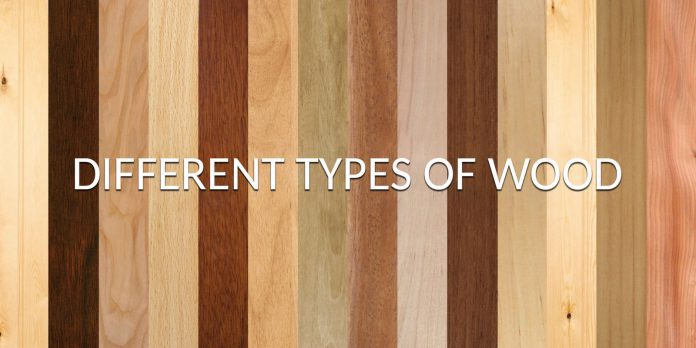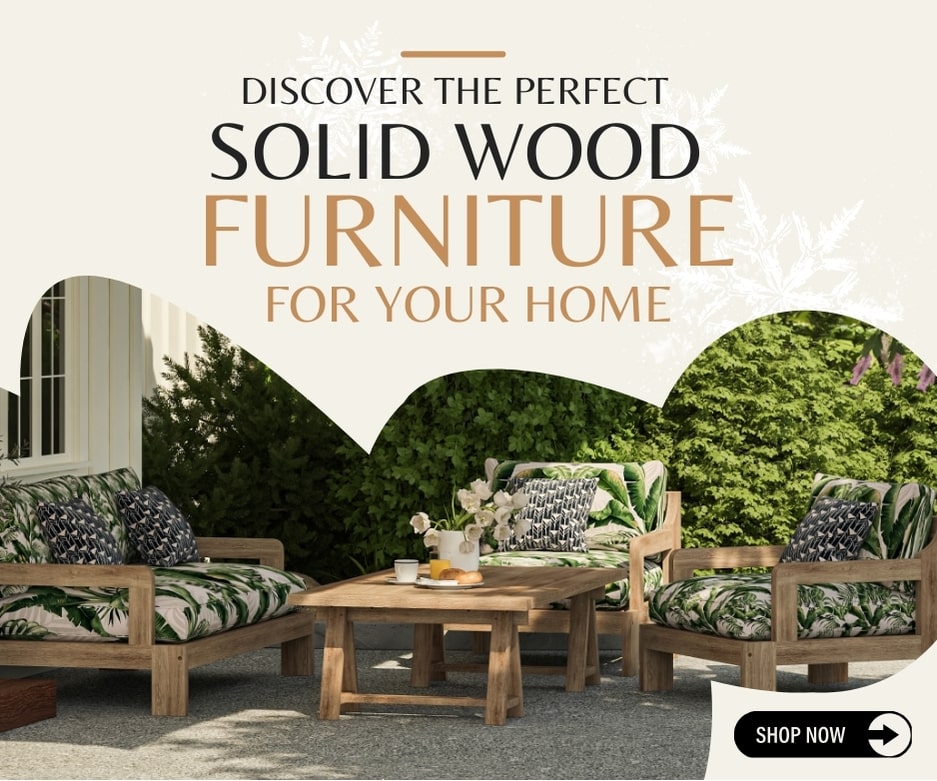Different Types of Wood For Furniture Making
Last Updated on July 13, 2024 by SierraLivingConcepts
How to Choose the Right Wood for Your Furniture
There are primarily two kinds of wood that are used to build furniture- naturally obtained solid wood and engineered wood. Solid wood is further classified into two types- Hardwood and Softwood. Hardwoods like rosewood, mahogany, mango, and acacia are the most preferred. These hardwoods are long-lasting and their texture allows artisans to build furniture with magnificent carvings.
Softwood, such as pine and cedar, is easily procurable and costs less compared to hardwood. It is often used to manufacture low-end furniture in bulk. Of late, engineered wood like plywood and MDF boards is being used to make furniture as it is affordable, but can only be used to create plain-looking undecorated furniture.
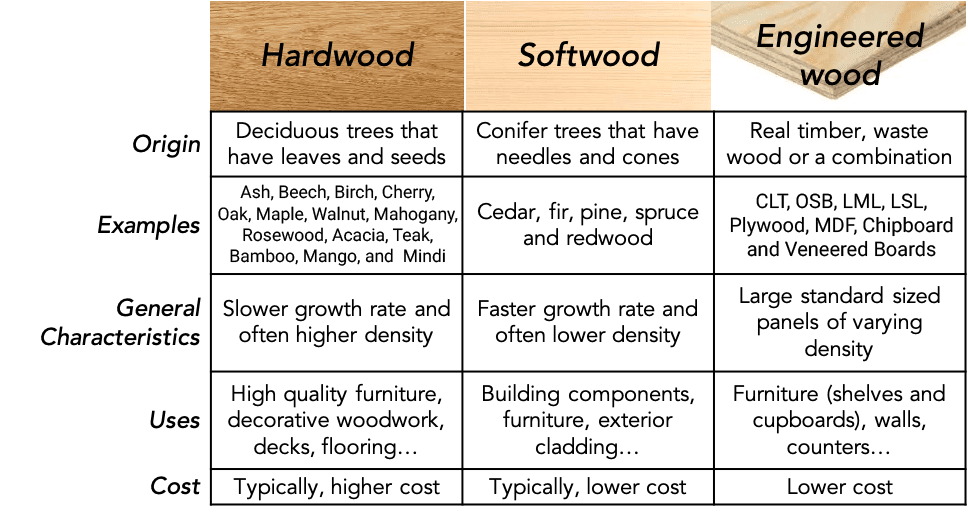
Types of Solid Wood
Solid wood is an excellent choice for making premium quality and exquisite furniture. It boasts excellent durability and can create stunning furniture pieces owing to its natural texture.
Rosewood
This wood is a timeless choice for hand-carved furniture. Rosewood trees are native to Brazil, Jamaica, Africa, and India and have a Janka hardness scale score of 2200 lbf. It is brownish-red and carries a premium quality. They have slow growth and usually grow to a height of 60 ft. Furniture made from Indian and Chinese rosewood is usually polished to accentuate the natural grain patterns.
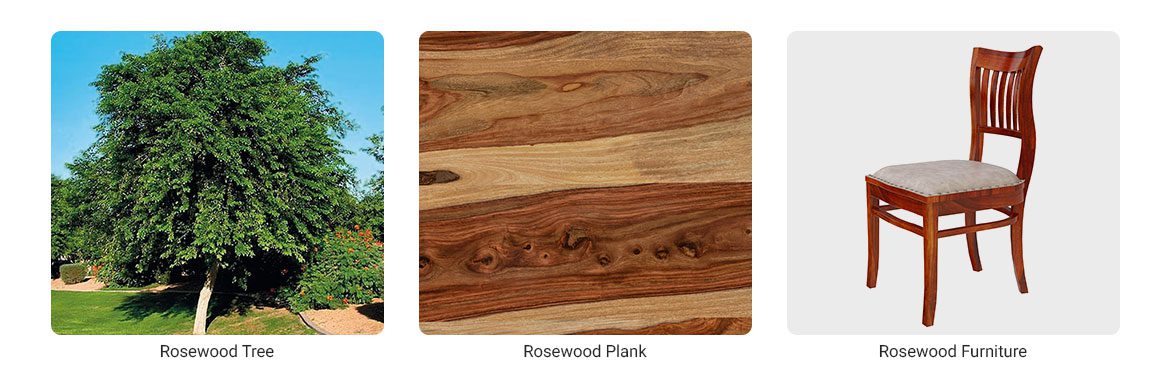
Mango Wood
Mango trees are not very common in the US and are found in tropical areas like southern Asia, the Pacific, and Brazil. The tree is about 90 ft tall and has a Janka score of 1070 lbf. Mango wood has dense grains and looks elegant when used to craft coffee tables, dressers, dining tables, nightstands, desks, sideboards, TV stands, and cabinets, among others. The consistency of hues and wood texture also makes it a wonderful choice for carved or distressed finish furniture.
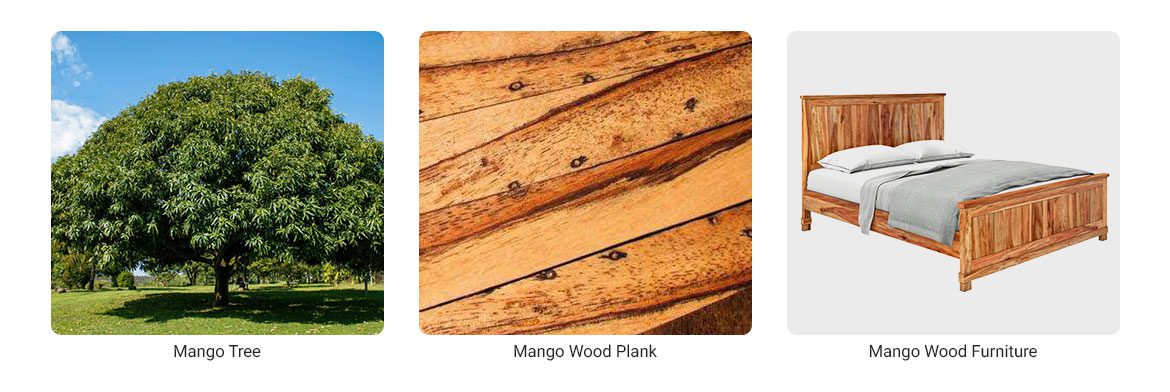
Mahogany Wood
Mahogany trees grow and flourish in warm climates and are found in South Florida, the Bahamas, and the Caribbean. They grow up to the height of 150 ft. Mahogany wood has a reddish-brown tint that beautifully darkens with time and has a straight fine even grain pattern. The Janka score is 800-900 lbf making mahogany wood furniture very durable. Cabinets and buffets built from African mahogany bear a magnificent look and feel.
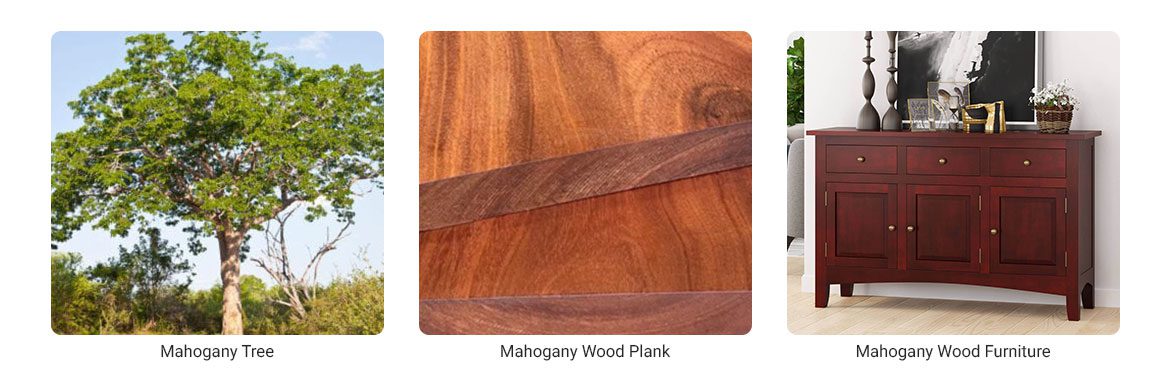
Acacia Wood
This type of wood is a versatile material and is often chosen to build coffee tables, benches, dining tables, nightstands, dressers, desks, and outdoor furniture. Acacia wood is abundantly found in Australia. This hardwood has a Janka score of 1750 lbf. It has a deep brown color and makes beautiful live-edge pieces.
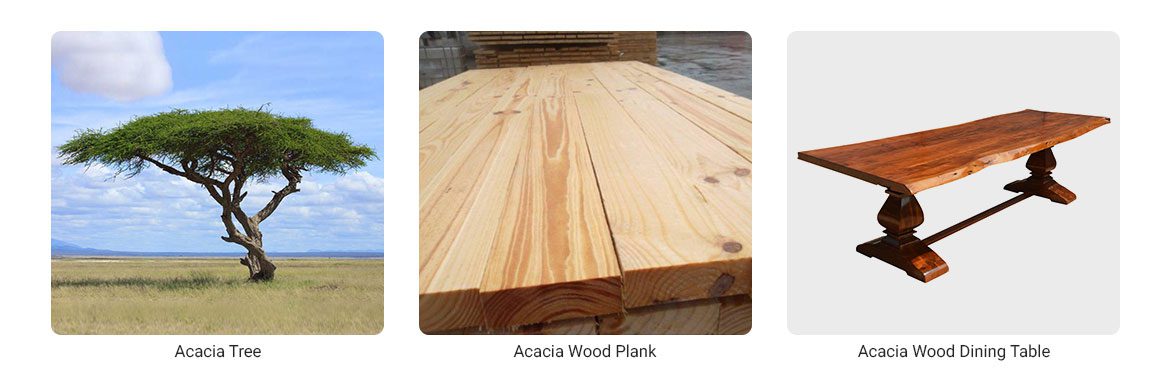

Teak Wood
Teak wood furniture carries an unmistakable brown hue and works splendidly as outdoor or patio furniture as well. They are native to tropical regions of Asia and America. The trees grow up to a height of 150 ft and have a Janka score of 1155 lbf. Dining tables and coffee tables made from teak wood carry a rustic, aristocratic look.
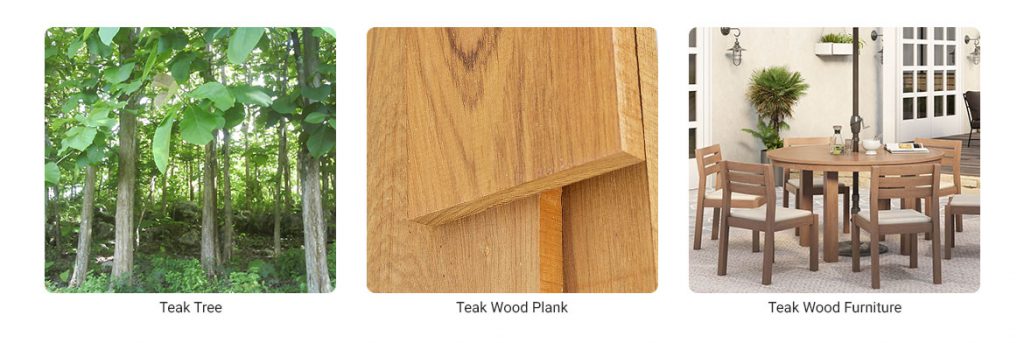
Mindi Wood
Mindi wood comes from the fast-growing Mindi tree. The tree is commonly found in various parts of America where they are used as shade trees. The Janka score is 1055 lbf of these 40 ft trees. Mindi has yellowish and brown streaks and is an ideal choice for chests and trunks.
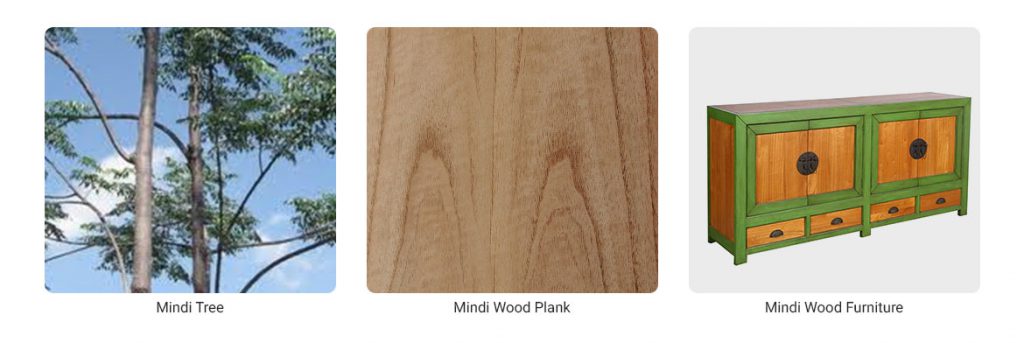
Cherry Wood
Cherrywood is commonly found in the midwest and eastern America. The tree is almost 85 ft tall and has a Janka score of 995 lbf. The wood has a creamy white to reddish-brown color that turns deeper with aging. Cherry wood furniture is popular and used to build premium cabinets, dressers, and TV stands. The Brazilian cherry wood looks great if used for flooring. The dark cherry wood eludes a rich vibrant finish.
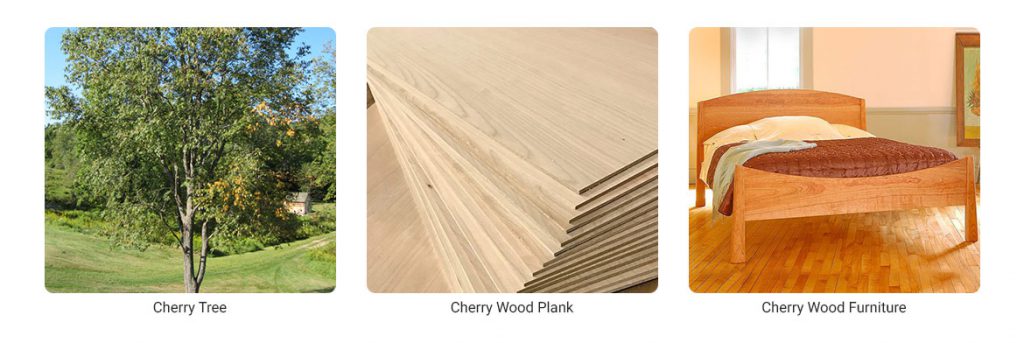
Maple Wood
This wood is inherently white with a reddish-brown color in between and goes well with white interiors. Maple wood furniture and flooring specially made from red maple wood give out a chic look. Maple trees are predominantly found in Asia and have a Janka score of 1450 lbf. The unique texture of the maple burl wood and the vivid pattern of the curly maple wood give way to interesting dining tables and coffee tables.
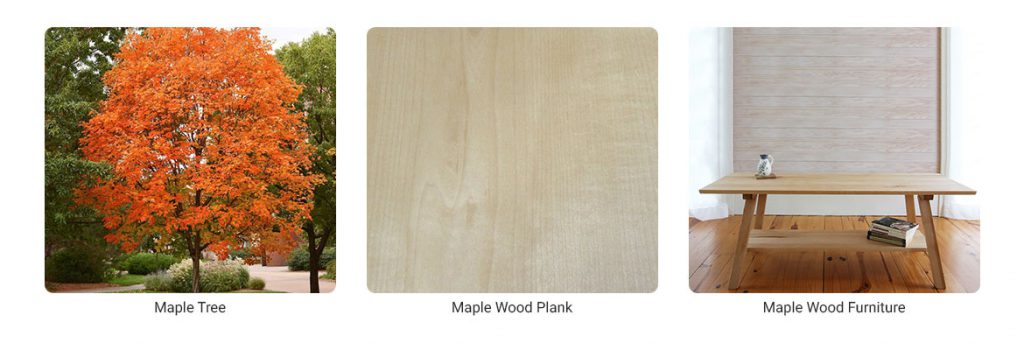

Oak Wood
Available in a wide variety like white, red, and black, oak trees are found throughout the Northern Hemisphere having cold moderate temperatures and can be almost 85 ft tall. Flooring made of dark oak wood has a vintage and affluent charm. The Janka score of oakwood is around 1290 lbf and is used to create an amazing and sturdy dining table, coffee table, and desk.
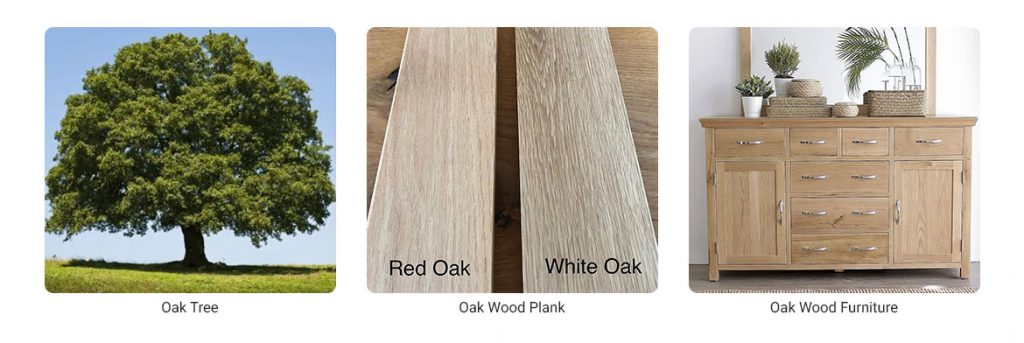
Birch Wood
Birchwood is a cost-effective hardwood. It is commonly found in northern America and the tree grows up to 70 feet in height. The color varies from pale white to reddish-brown and yellow. The texture and color make it a perfect choice for wooden flooring. The Janka score is 1260 lbf and is a good choice for building sturdy cabinets.
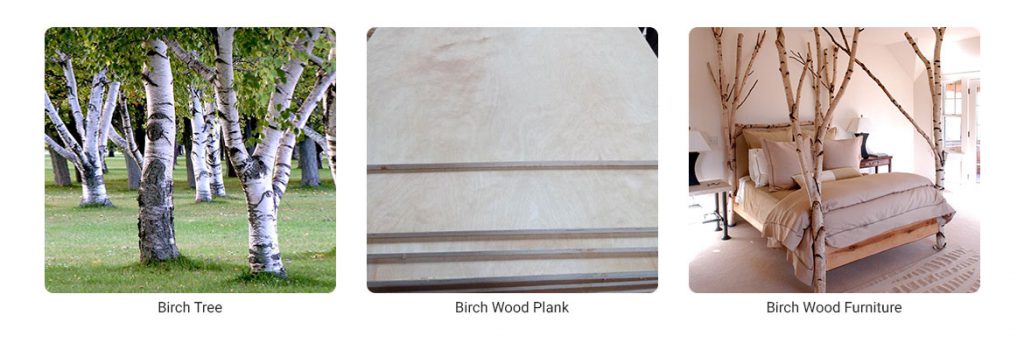
Walnut Wood
Walnut trees are common in the US and grow up to 75 ft. The natural walnut wood has a straight open grain. The Janka score is 1010 lbf. Wood from the black or dark walnut tree works beautifully for wooden flooring and beds with elaborate headboards. Accent cabinets that use walnut burl wood look admirably unique and iconic.
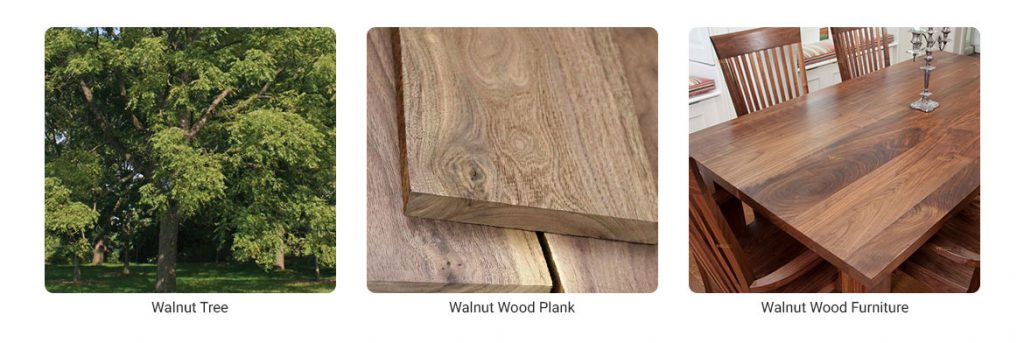
Bamboo Wood
Perhaps one of the most common trees globally, bamboo wood is an outstanding material due to its sustainability. Bamboo wood flooring is often preferred over the commonly used hardwood. The bamboo tree grows up to a height of 130 feet and is cost-effective. With a Janka score of 1300 lbf, bamboo is perfect for making a wide range of furniture especially outdoors.
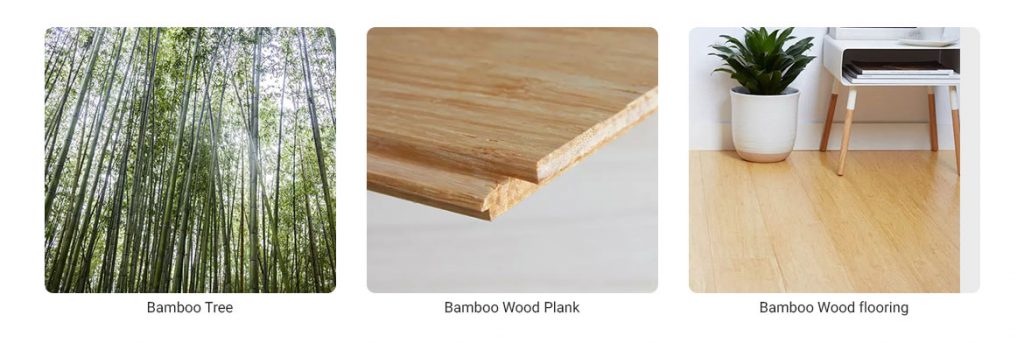
Types of Softwood
Softwood trees grow at a faster pace than hardwood trees. It is a popular choice as it is readily available. It is cost-effective and a great option when building furniture in huge quantities.
Redwood
Redwood is often used as a preferred choice for flooring and furniture. It is quite cost-effective.
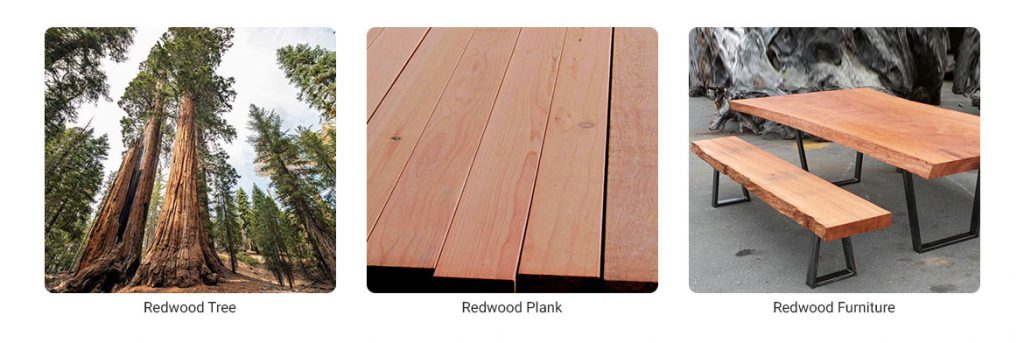
Cedar Wood
Cedarwood is often preferred over durable domestic wood. The Janka score of the wood is 900 lbf and is great for decks and inner moldings.
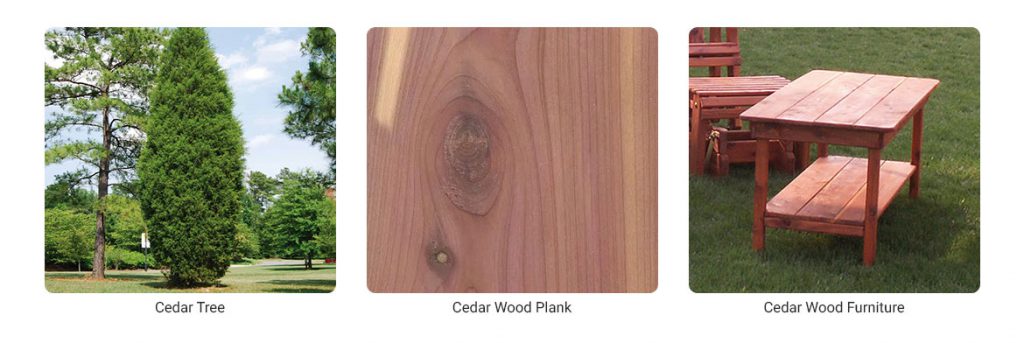
Pine Wood
Pine wood is not very expensive and is widely used as cheap timber. The tree grows up to 260 ft depending on the species. The Janka Hardness scale score of the white pine tree is around 500 lbf. A dresser is a common pine wood piece of furniture however people often choose pine wood to do flooring.
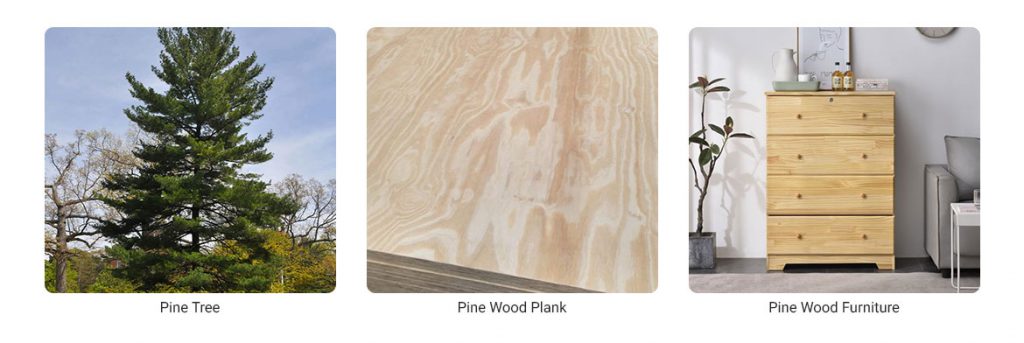
Spruce Wood
Commonly used as construction timber, spruce wood has a Janka score of 480 lbf. The trees are not very tall and grow to 16 ft. The blue spruce tree is usually used to make smaller furniture like chairs and tables.
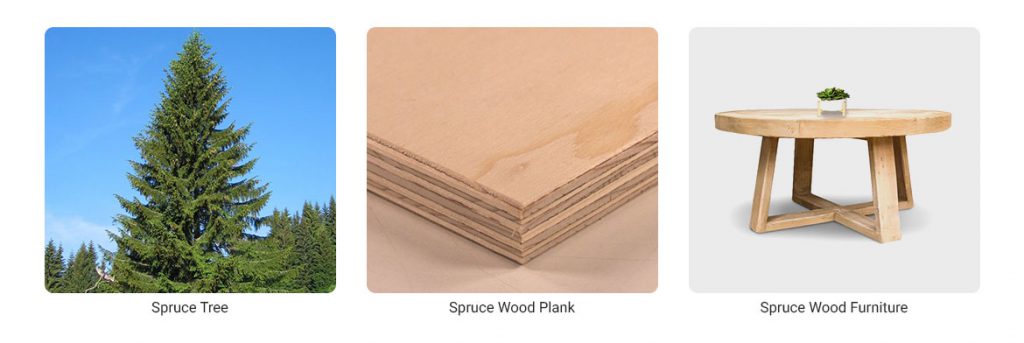
Fir Wood
Firwood is a relatively inexpensive wood and is commonly used for ceiling paneling. With a Janka score of 2900 lbf, it grows to a height of 300 ft and is found in the northeastern part of America.
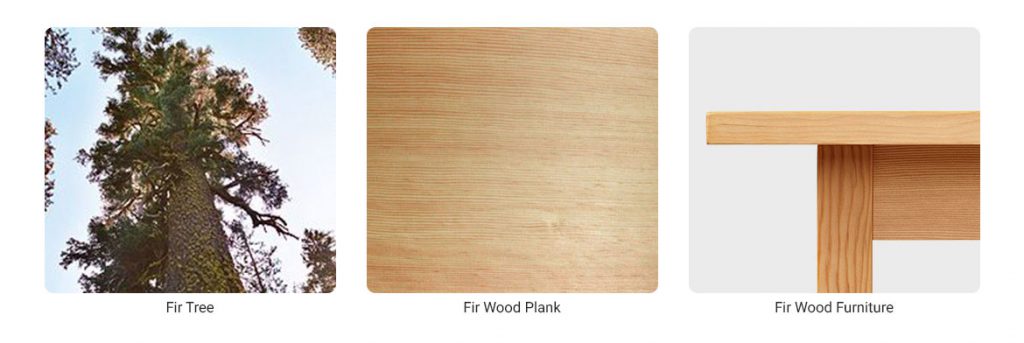
What is Engineered Wood?
Engineered wood has gained a lot of mileage in the last couple of years. It is affordable and is used to make durable, yet simple-looking furniture. Engineered wood is susceptible to water damage and requires more care. It is a pocket-friendly option for families that plan to upgrade their furniture every few years.
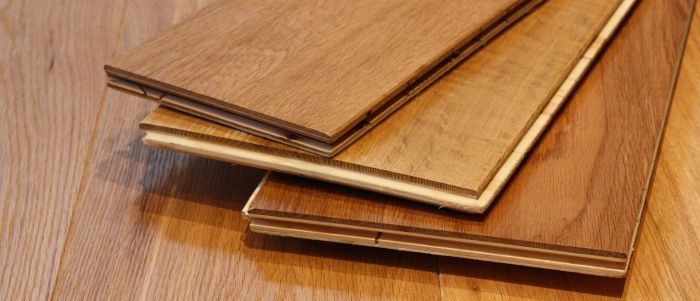
Plywood
Plywood is made by combining thin sheets of wood with resin. It is light and not easy to sculpt and is not very durable compared to hardwood. The cross-graining in plywood increases its strength.
Medium Density Fiberboard (MDF)
MDF is made by breaking down hardwood and softwood into fibers and combining them with wax and resin to create a hard panel by applying heat and pressure. Depending on whether hardwood or softwood is used, will define the density of the MDF. MDF is heavier and cannot hold too much weight. It soaks up water and swells, and cannot be stained. MDF works fine as a back panel for storage furniture pieces.
Cross Laminated Timber (CLT)
CLT consists of a large number of kiln-dried lumber wood that is stacked in alternate directions. They are stuck together with structural adhesives and pressed to form one single panel. Although the material is less expensive, limited production makes it a challenge.
Oriented Strand Board (OSB)
OSB is formed by combining flakes of wood with the help of an adhesive. They tend to expand and contract with moisture and that can cause the material to buckle if used on floors instead of reliable solid wood.
Composite Board
The composite board includes both plastic and wood fibers. Though it is eco-friendly, it is slightly difficult to maintain.
Laminated Veneer Lumber (LML)
This is made from wood veneer compressed together with glue and resin. The LML has one strength axis as they are stacked grain running in the same direction.
Laminated Strand Lumber (LSL)
LSL is 95% wood fiber and 5% resin. It is made from small strips of wood placed in dense angular patterns.
| Wood type | How they are made | Janka Hardness | Advantage | Disadvantage |
| Plywood | Combining thin wooden sheets with resin | – | High impact resistance | Can emit fumes that irritate eyes |
| MDF | Combining fibres of softwood and hardwood | 1200 lbf on Janka scale | Inexpensive | It is weaker. It cannot be stained. |
| CLT | Kiln-dried lumber stacked together | – | Low environmental impact | Limited production becomes a challenge |
| OSB | Flakes of wood with adhesive | – | Greater strength than plywood | Swells due to moisture |
| Composite board | Compressed plastic and wood | – | Environmentally friendly | Requires constant care |
| LVL | Wood veneer compressed with glue | – | Cheaper and lighter | Size may vary after installing |
| LSL | Combination of wood and resin | – | Higher bending strength | Can have defects like warping |



